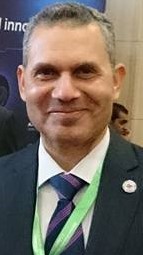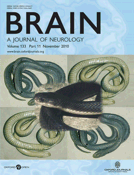Patients with chronic stroke often show increased flexor hypertonia in their affected upper limbs. Although an intervention strategy targeting the extensors of the affected upper limb might thus be expected to have benefits for functional recovery, conventional repetitive motor training has limited clinical utility. Recent studies have shown that repetitive transcranial magnetic stimulation could induce motor recovery. The present study tested whether 5 Hz repetitive transcranial magnetic stimulation of the upper-limb area of the primary motor cortex, combined with extensor motor training, had a greater effect on motor recovery than either intervention alone in stroke hemiparesis. Nine patients with chronic subcortical stroke and nine age-matched healthy subjects completed the crossover study. In separate sessions, we examined the single intervention effect of repetitive wrist and finger extension exercises aided by neuromuscular stimulation, the single intervention effect of 5 Hz repetitive transcranial magnetic stimulation and the combined effect of the two interventions. The motor functions were evaluated behaviourally in patients (Experiment 1) and electrophysiologically in healthy subjects (Experiment 2), both before and after the intervention. In addition, we tested the long-term effect by repeating the combined interventions 12 times in patients (Experiment 3). The motor functions were measured again 2 weeks after the end of the repetitive intervention period. In Experiment 1, the combined intervention, but neither of the single interventions, resulted in an improvement of extensor movement (P < 0.0001) and grip power (P < 0.05), along with a reduction of flexor hypertonia (P < 0.01), in their paretic upper limbs. In Experiment 2, only the combined intervention resulted in selective plastic changes of cortico-spinal excitability (P < 0.01), motor threshold (P < 0.001) and silent period (P < 0.01) for the extensors. In Experiment 3, we also confirmed long-term beneficial effects of the combined intervention in patients. These findings indicate that combining motor training with repetitive transcranial magnetic stimulation can facilitate use-dependent plasticity and achieve functional recovery of motor impairments that cannot be attained by either intervention alone. This method could be a powerful rehabilitative approach for patients with hemiparetic stroke.


